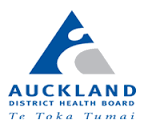Kia Ora & Welcome,
This course is developed to enable new & existing healthcare professionals to understand the standards expected for assessing adult patients using the Glasgow Coma Score (GCS), within Ward 83 Neurosurgery Department.
Neurosurgery uses Neuro Adult Vital Signs Chart CR5840, these 2 separate tools (GCS & EWS) combined one page are measured separately & not graded together. GCS measures the decrease in consciousness, scores from each section of the scale are useful for describing disruptions in the nervous system & help providers track changes.
Teasdale & Jennett (1974) describe the GCS scale as an assessment of coma & impaired consciousness as a way to communicate altered levels of consciousness (LOC) with patients with an acute brain injury.
The GCS scale guide helps measure and monitor trends using three key modes of behaviours (eye, verbal, motor) & their responses with a minimum GCS of 3 & total GCS of 15.
In comparison to Te Toka Tumai wards use NZEWS Adult Vital Signs chart. This system uses a the Alert, Voice, Pain, Unresponsive (AVPU) scale which is taught to healthcare professionals & first aiders how to record the patients LOC.
Using a tick √ instead of a • or χ to graph as to track & trace a trend GCS example above
Where as GCS is measuring higher brain functioning for best response & graphing a trend - in conjunction with Pupil assessment & limb strength.
 Neuro Vital Signs Chart CR5840 (clinical forms) can also be used as a resource outside this department, please contact Ward 83 Neurosurgery Department for Te Toka Tumai Auckland for questions.
Neuro Vital Signs Chart CR5840 (clinical forms) can also be used as a resource outside this department, please contact Ward 83 Neurosurgery Department for Te Toka Tumai Auckland for questions.
All other wards for suspected Falls please ref to clinical forms for Adult Observation Chart CR5782A & use this Neuro Obs Chart.
You may also wish to refresh your Neuro assessment skills with further learning, refer to Clinical Assessment e Learn module to complement Neuro Obs skills.